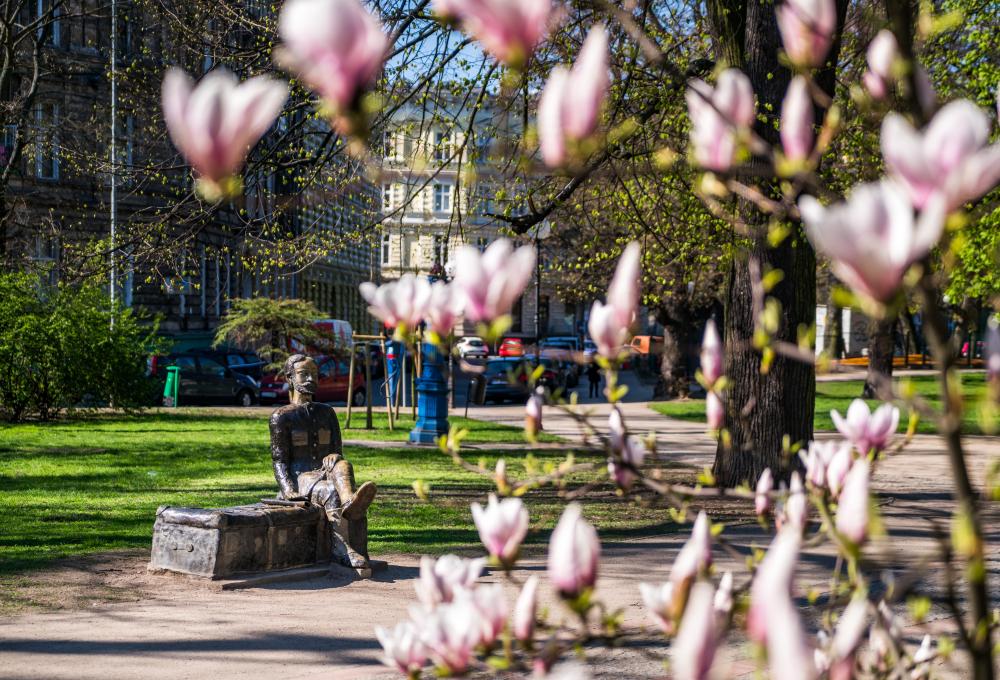Gen. Władysław Anders Park

Since the 18th Century the site of the present part served as a military cemetery for the Prussian soldiers of the Szczecin garrison.
This was where, among other people, the Szczecin Field Marshal Friedrich Ernest von Wrangl (1784-1877) was buried. This was also where later, on the completion of the French and Prussian War (1870-71), the remains of the French captives were buried, which was commemorated with a remembrance plate.
In 1934-1936 a wooden open-work 93-metre-high radio tower stood in the middle of the park. Exposed to strong winds, it was subject to frequent damage, and was eventually disassembled in 1936.
The park comprises the largest cluster of Black Locus in the city. It also features a number of elm trees, and a line of horse chestnut trees in the north, which is unique countrywide. There are also tamarisks and two exceptional silver berries, growing besides the church presbytery. A watchful eye will spot the Amur cork tree coming from the Far East. This is an industrial tree whose bark is used to produce bottle plugs and fishing floats, while the yellow phloem found under the bark is used in the manufacture of an intense colouring material. The Amur cork tree fruit produces up to 10% of ether oils while roses produce only 6%.
Modern sculptures and statues were placed in many spots in the park, next to some of the most exceptional species of trees and bushes. One of the statues shows Jan Czekanowski (1882-1965), a renowned Polish anthropologist, ethnographer, statistician and linguist, sitting on a travelling trunk, encouraging tired pedestrians to stop and rest next to him.
